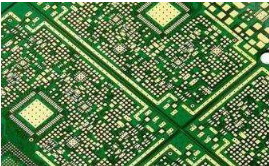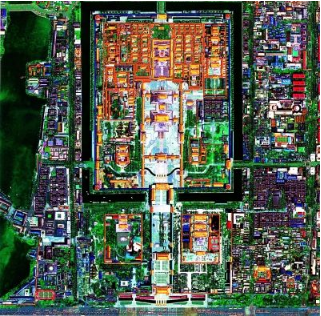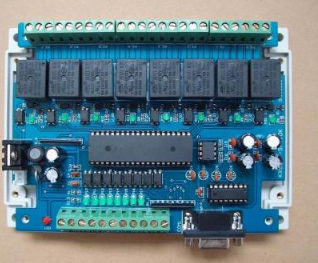
We often work in some key areas in the medical field. Because the space is very small and the tolerances allowed for medical devices are extremely small, even many of them are submicron, now the multi sensor measurement system is widely favored in the medical field to develop, maintain and improve the quality of PCB medical devices.
In the field of plastic surgery transplantation, such as ball and socket joint of artificial total hip joint, tibial, total knee and ankle implants need highly accurate measurement methods. The surfaces of these implants are high degree curves formed by non-uniform rational splines (NURBS). The circuit board editor found that since the transplant components must match with the prosthesis components or even the components implanted in the human body, they are often irregular and curved. The complex 3D curve increases the difficulty of measuring all planes from one direction, which makes it difficult for some types of sensors to measure them effectively.

The video measuring system is suitable for measuring prismatic workpieces with intersecting planes. When planes intersect, edges appear, and video can easily measure edges. The plastic surgery transplantation component is usually composed of continuous regular curves (artificial hip joint fittings) or complex contour surfaces (artificial knee joint fittings), whose shape is just like the contour of human organs. These surfaces have little or no planes or intersecting edges.
Although the video sensor is good at measuring edges and surface points, it is very laborious and impractical to use a large number of data points to obtain the data of even the linear section of the contour surface. Triggered probes also have the same limitation, because the probes need to approach each point and return to the original position after triggering - although it is feasible, it is also not suitable for measuring large quantities of products.
The best way to determine whether the bionic curve profile of the artificial knee joint meets the PCB design requirements is to use laser measurement. How does the laser sensor work in the multi sensor measurement system? The laser sensor projects light to the workpiece surface, and the sensor obtains reflected light and scattered light and automatically calculates the distance between the laser and the workpiece in 3D space. The laser can measure a point, or when the workpiece moves down from the laser or the laser scans the PCB workpiece, a series of data points can also be obtained and calculated. You can customize the sampling interval and sampling rate.
When the laser ray moves over the workpiece, the measurement software can continuously calculate the distance between the laser and the workpiece surface, and keep the laser sensor within the capture range through the closed loop positioning controlled by the Z-axis platform. In this way, the exact location of data points can be obtained quickly. Laser focusing is faster and more accurate than video automatic focusing. Because the laser is a non-contact sensor, potential damage to the workpiece surface and potential pollution to sterile workpiece are avoided.
In most cases, it may be difficult for the operator to fix the knee prosthesis to ensure that the laser is directed to all critical surfaces. At this time, it is a solution to install the prosthesis on the rotary indexing table. At the same time, the steps of manually loading and unloading the workpiece and fixture are reduced, so as to speed up the measurement.
Generally, the probe is used to establish a benchmark from the knee bend surface, and then the indexing table is rotated to rotate the knee prosthesis to present the most ideal surface for laser sensor measurement. As the datum is set on the opposite side of the surface to be measured, the measurement system must be equipped with complete 3D measurement software. When the indexer rotates, the software can rotate the coordinate system. In this way, no matter what the position of the rotary indexer is, every data point captured by the laser can be found in the 3D space controlled by the measurement software.
Another way to measure the complex contour of the knee prosthesis is to use the Renishaw SP25 contact scanning probe. PCB factory learned that, similar to laser, the operator determines the starting point and end point of scanning. The difference is that the probe always contacts the prosthesis surface when the system moves on the workpiece surface and acquires data points. Unlike the trigger probe, the SP25 contact scanning probe always keeps in contact with the workpiece. Like laser, data point density and scanning speed can be customized. When the multi sensor system is equipped with SP25, the supporting 3D measurement software must be installed to track the data points in 3D space.
There are other ways to measure the knee prosthesis fixed on the rotary indexing table. The aforementioned linear laser and contact probe scanning can scan the top surface of the prosthesis on the indexing table. Because linear scanning represents a linear section of 3D workpiece, this section can be measured by video sensor as an edge. Rotate the prosthesis 90 degrees, and when the light shines on the workpiece from behind, the section becomes an obvious "edge". This technique requires a good measuring lens system, which has a long working distance and is less affected by the slope of the knee prosthesis.
Because the "section" is larger than the optical window, when the system automatically tracks edges and acquires data points in multiple windows, functions such as "edge finder" can be properly applied.
The knee prosthesis is mounted on a rotary indexing table, and its entire surface can be measured. Slowly rotate the indexer to rotate only a few angles each time, and then multiple linear scans (or edge searching) can be completed to generate a data lattice. These data lattices can be imported into 3D fitting software. After the rotation center is obtained, the software will show how the workpiece data is consistent with the CAD model of the workpiece.
Some fitting PCB software can even perform geometric dimension and tolerance analysis of data lattice, while meeting multiple requirements, and any deviation between the diagram and design documents. This analysis can not only be used in the acceptance stage of each workpiece, but also can improve the accuracy and efficiency of subsequent workpiece production during the production process.
Medical equipment manufacturers need to record and control PCB production process at any time, which also includes the application of testing equipment to control and monitor product quality. The circuit board factory found that the multi sensor measurement system can quickly and accurately detect the important dimensions of medical equipment, and minimize the number of workpiece loading and unloading. It is the name of the game to ensure that the produced artifacts meet the design specifications. The final result will affect the health of the balance sheet of medical equipment manufacturers - and ultimately the health of patients.









